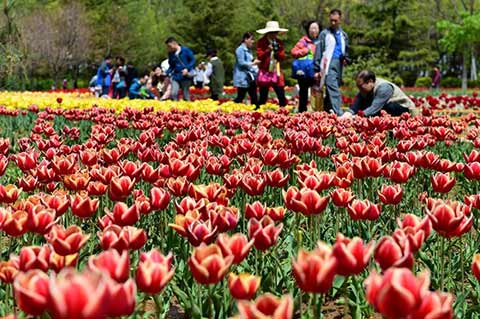Unlocking values through green buildings construction
By Kenny Suen from Hong Kong (China Daily) Updated: 2012-11-01 16:26Government measures and creative corporate strategies, as well as the mastering of internationally recognized standards, can help unlock potential values in developing a rather new niche market - Chinese green buildings construction.
By 2015, nearly half of the buildings construction could be green in China as per the World Bank's estimation. Energy consumption by all buildings in China has been estimated to grow from 10 percent of the national total in 1970s to 2006's 20 percent, and is estimated to shoot up further to 40 percent by 2020, revealing a major theme in China's real estates sector.
In fact, China has already imposed extremely high requirements on energy efficiency in its 12th Five-Year Plan (2011-15). The building sector has been classified as one of the three major drivers (other two: industry and transportation) in the country's energy consumption.
And it is realized that buildings can actually present great potential for energy savings by refurbishing existing buildings, establishing stricter building codes, and promoting green building labels, monetary rewards and initial capitals offers for green building developers by the government.
To a certain extent, developers may still need to be convinced to have building construction from a lifecycle point of view, rather than merely focusing on the upfront investment returns. Lower operation costs (achieved by reducing energy and water consumption), alongside higher occupants' productivity can help save money over time, although more efforts have to be done during the design and construction of the buildings.
Perhaps, it may be a good time for both the government and builders to push forward such a meaningful issue. At present, there have been some organizations which have published standards to regulate, and to foster a healthy and rapid development of green buildings. National Development and Reform Committee, Ministry of Housing and Urban-Rural Development, and Ministry of Environmental Protection are among the domestic organizations or parties on this front.
And developed by the United States Green Building Council, Leadership in Energy and Environmental Design (LEED), are among the most famous foreign organizations. LEED has a suite of rating systems for the design, construction and operation of high performance green buildings (including commercial, offices, industrial factories, multi-family residential buildings, retails centers, laboratories and hotels), which have been gaining more attention in the Chinese buildings market.
Nonetheless, successful examples of green public buildings in China are still rare because local developers and companies are still lagging behind. Currently, energy-saving buildings in China account for a low single-digit percentage share in the country's total construction by square meter, according to market sources.
It may also reflect that mere dependence on policy promotion cannot ensure sustainable development. Builders may also need to take an active role in identifying and meeting customers' short and long term needs. In fact, the cost of green buildings can save more than half of the energy per unit, but it is just five to seven percent higher than the ordinary buildings.
Besides, there could be higher economic values for green buildings on a longer term, offering a buffer to any slowdown in economic growth with more job opportunities creation. What's more is that it may also deliver a clear and important signal for our younger generation on how the country has been helping them prepare for the future.
Looking ahead, China aims to have all the government non-profit making new buildings to be green ones by 2014. And at least one billion square meters of new green buildings will be completed by 2015, uplifting the percentage shares of new green buildings out of the total new buildings to at least 30 percent.
The author is vice-chairman and CEO of international property consultant Vigers Group. The views expressed here are entirely his own.
- Energy efficiency boosts China's green shift
- More funds to be available for green auto industry
- Any design you desire, so long as it is 'green'
- China's green shift a boon to global economy
- Overseas energy projects get green light
- Curbing pernicious side of energy-saving products
- China's Energy Policy 2012
- Air con giant Carrier to raise R&D activities
- Jilin expects 'industrial boom' from innovation and upgrading
- South Korean soft power to make Chinese products snazzy
- US to sell pork to Chinese via Alibaba platforms
- Young and innovative designers in China thrive
- Design shines at Canton Fair
- Ongoing passion for fitness offers healthy returns to startups
- Epson to step up pace of innovation to meet Chinese demand

















